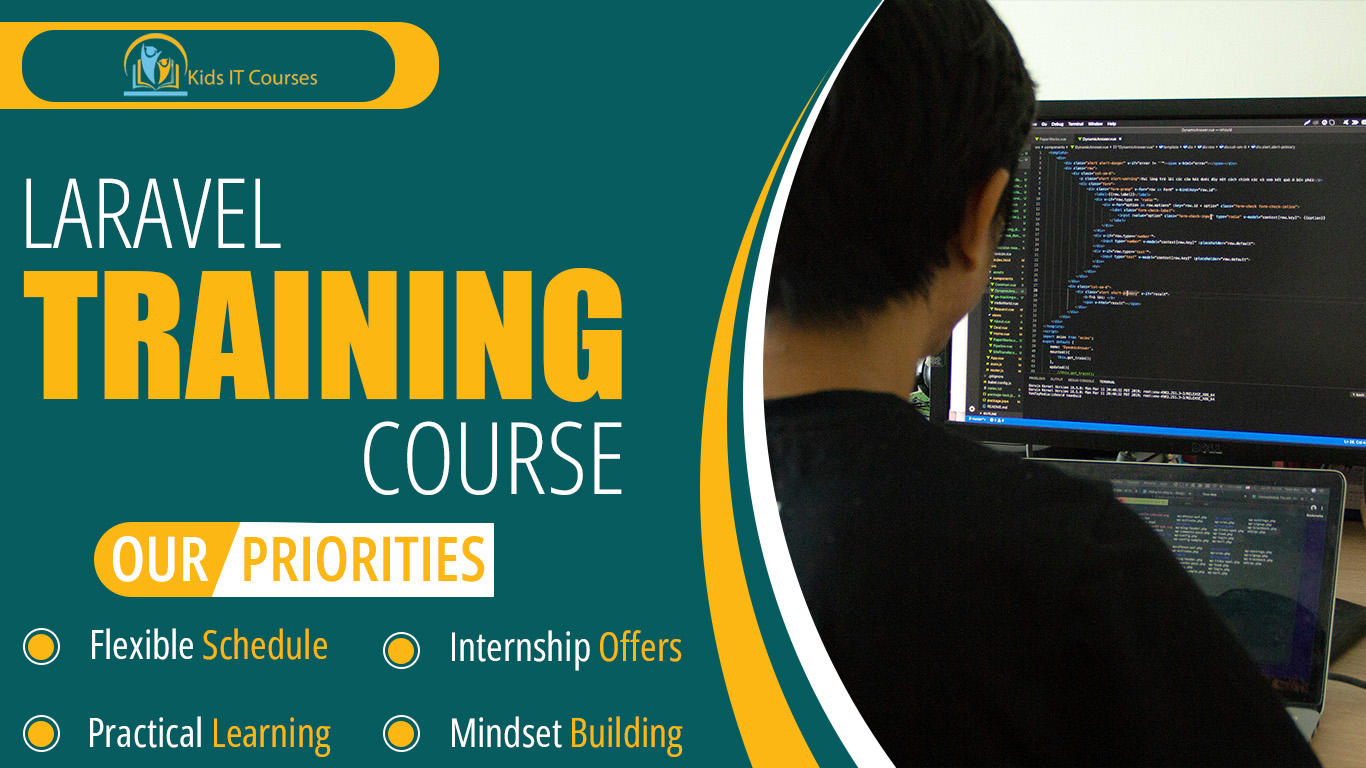
Laravel Course for Kids
Definition
• Laravel helps build websites. Kids make cool web pages.
• It uses PHP language. Easy to learn and fun.
• Kids create web tools. Like blogs and stores.
• They learn to organize code. Make websites work faster.
• Kids fix bugs and errors. Improve their projects well.
• It teaches both design and coding. Working together smoothly.
• Prepares kids for web jobs. Web development is a great skill.
Importance
• Laravel helps build websites. Kids learn to make cool pages.
• It teaches easy coding steps. Making web work simple.
•Kids create real web projects. They see how sites work.
•It shows how to save data. And keep it safe.
•Kids learn to fix problems. Make websites better fast.
• It builds smart thinking skills. Solving puzzles with code.
• Prepares kids for future jobs. Web skills are in demand.
Advantages for Freelancing
• Laravel helps build websites. Kids learn to make cool pages.
• It uses simple coding tools. Easy to understand and use.
• Kids create safe websites. Keeping information secure.
• It teaches problem-solving skills. Fixing errors step by step.
• Kids learn to work fast. Build websites quicker than before.
•It shows how to organize code. Making projects neat and clear.
•Gives skills for future jobs. Web design is a great career.
Session 1 : Introduction to Laravel
What is Laravel and why it’s one of the most popular PHP frameworks for web development
Real-life example: Building an online store with user authentication, products, and orders (Laravel in action)
Setting up Laravel on your local environment using Composer
Understanding the MVC (Model-View-Controller) architecture in Laravel
Activity: Create your first Laravel app with a simple welcome page
Session 2 : Routing and Controllers in Laravel
What are routes and how to define them in Laravel
Real-life example: Navigating between pages of a blog (routes in action)
Creating controllers to handle HTTP requests and route them to views
Using route parameters and named routes for dynamic content
Activity: Build an app with multiple pages and controllers to handle the requests
Session 3 : Views and Blade Templating Engine
What are views in Laravel and how they separate logic from presentation
Real-life example: Displaying dynamic content like user profiles and blog posts (views in action)
Understanding Blade templating syntax for rendering data
Using loops, conditionals, and template inheritance with Blade
Activity: Create a dynamic page that renders a list of blog posts using Blade
Session 4 : Working with Databases and Eloquent ORM
What is Eloquent ORM and how it simplifies database interactions in Laravel
Real-life example: Storing user information and products in a database (Eloquent in action)
Setting up migrations to create database tables
Creating, reading, updating, and deleting (CRUD) operations using Eloquent models
Activity: Build a basic CRUD application to manage blog posts
Session 5 : Handling Forms and Validation in Laravel
What are forms and how to handle them in Laravel
Real-life example: A user registration form that validates input (forms in action)
Using Laravel’s built-in validation for form inputs and error handling
Creating and processing forms with CSRF protection
Activity: Build a form for adding a new blog post with validation rules
Session 6 : Authentication and Authorization in Laravel
What is authentication and how Laravel handles it with built-in tools
Real-life example: Logging in to a personal account (authentication)
Setting up user login and registration with Laravel Breeze or Laravel Jetstream
Using middleware for role-based authorization and access control
Activity: Create an authentication system for your app (login, register, password reset)
Session 7 : API Development in Laravel
What is RESTful API and how to build one with Laravel
Real-life example: A mobile app that communicates with a server through an API (API in action)
Creating API routes and returning JSON responses
Authenticating APIs with tokens and API middleware (using Passport or Sanctum)
Activity: Build a simple API that allows users to retrieve and create blog posts
Session 8 : Final Project – Build a Complete Laravel Application
Plan and build a full-featured Laravel app using routing, views, controllers, Eloquent ORM, authentication, and APIs
Implement validation, authorization, and CRUD operations for managing data
Test your app and deploy it to a live server (Heroku or DigitalOcean)
Activity: Present your Laravel project, demonstrating key features and Laravel concepts
Bonus Materials
Laravel cheat sheet with routing, Eloquent, and Blade syntax
List of essential Laravel packages and tools to improve productivity
Resources for learning advanced Laravel topics (queues, event handling, etc.)
Interactive coding challenges and quizzes
Certificate of Completion for Laravel Basics
